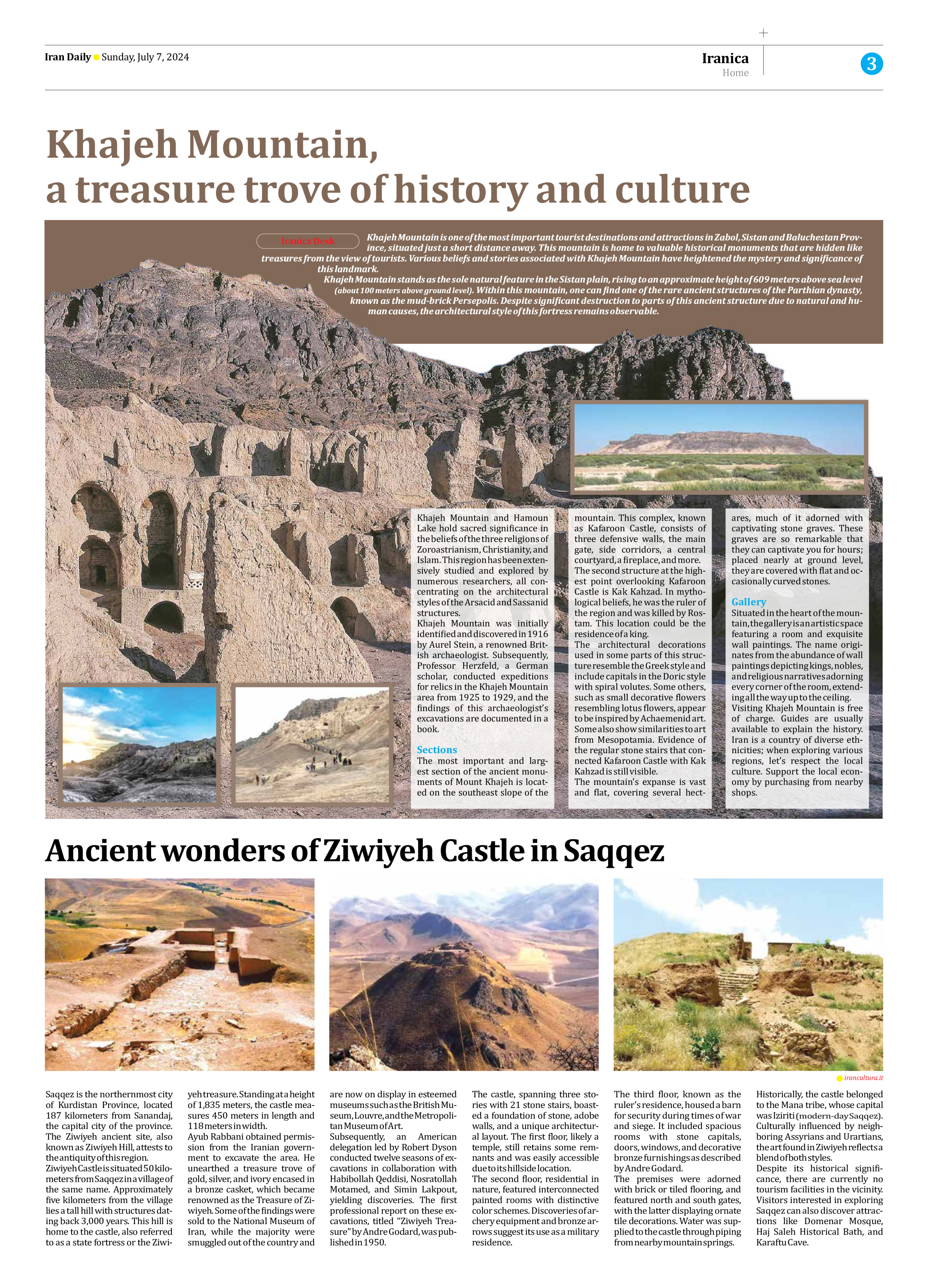
Ancient wonders of Ziwiyeh Castle in Saqqez
Saqqez is the northernmost city of Kurdistan Province, located 187 kilometers from Sanandaj, the capital city of the province. The Ziwiyeh ancient site, also known as Ziwiyeh Hill, attests to the antiquity of this region.
Ziwiyeh Castle is situated 50 kilometers from Saqqez in a village of the same name. Approximately five kilometers from the village lies a tall hill with structures dating back 3,000 years. This hill is home to the castle, also referred to as a state fortress or the Ziwiyeh treasure. Standing at a height of 1,835 meters, the castle measures 450 meters in length and 118 meters in width.
Ayub Rabbani obtained permission from the Iranian government to excavate the area. He unearthed a treasure trove of gold, silver, and ivory encased in a bronze casket, which became renowned as the Treasure of Ziwiyeh. Some of the findings were sold to the National Museum of Iran, while the majority were smuggled out of the country and are now on display in esteemed museums such as the British Museum, Louvre, and the Metropolitan Museum of Art.
Subsequently, an American delegation led by Robert Dyson conducted twelve seasons of excavations in collaboration with Habibollah Qeddisi, Nosratollah Motamed, and Simin Lakpout, yielding discoveries. The first professional report on these excavations, titled “Ziwiyeh Treasure” by Andre Godard, was published in 1950.
The castle, spanning three stories with 21 stone stairs, boasted a foundation of stone, adobe walls, and a unique architectural layout. The first floor, likely a temple, still retains some remnants and was easily accessible due to its hillside location.
The second floor, residential in nature, featured interconnected painted rooms with distinctive color schemes. Discoveries of archery equipment and bronze arrows suggest its use as a military residence.
The third floor, known as the ruler’s residence, housed a barn for security during times of war and siege. It included spacious rooms with stone capitals, doors, windows, and decorative bronze furnishings as described by Andre Godard.
The premises were adorned with brick or tiled flooring, and featured north and south gates, with the latter displaying ornate tile decorations. Water was supplied to the castle through piping from nearby mountain springs.
Historically, the castle belonged to the Mana tribe, whose capital was Iziriti (modern-day Saqqez). Culturally influenced by neighboring Assyrians and Urartians, the art found in Ziwiyeh reflects a blend of both styles.
Despite its historical significance, there are currently no tourism facilities in the vicinity. Visitors interested in exploring Saqqez can also discover attractions like Domenar Mosque, Haj Saleh Historical Bath, and Karaftu Cave.







